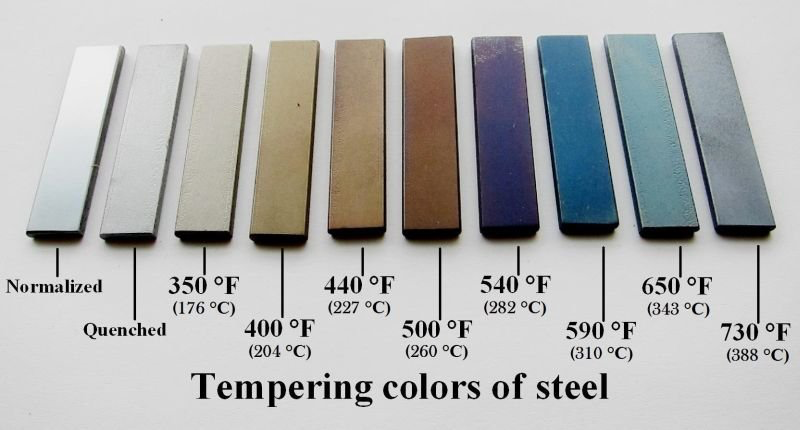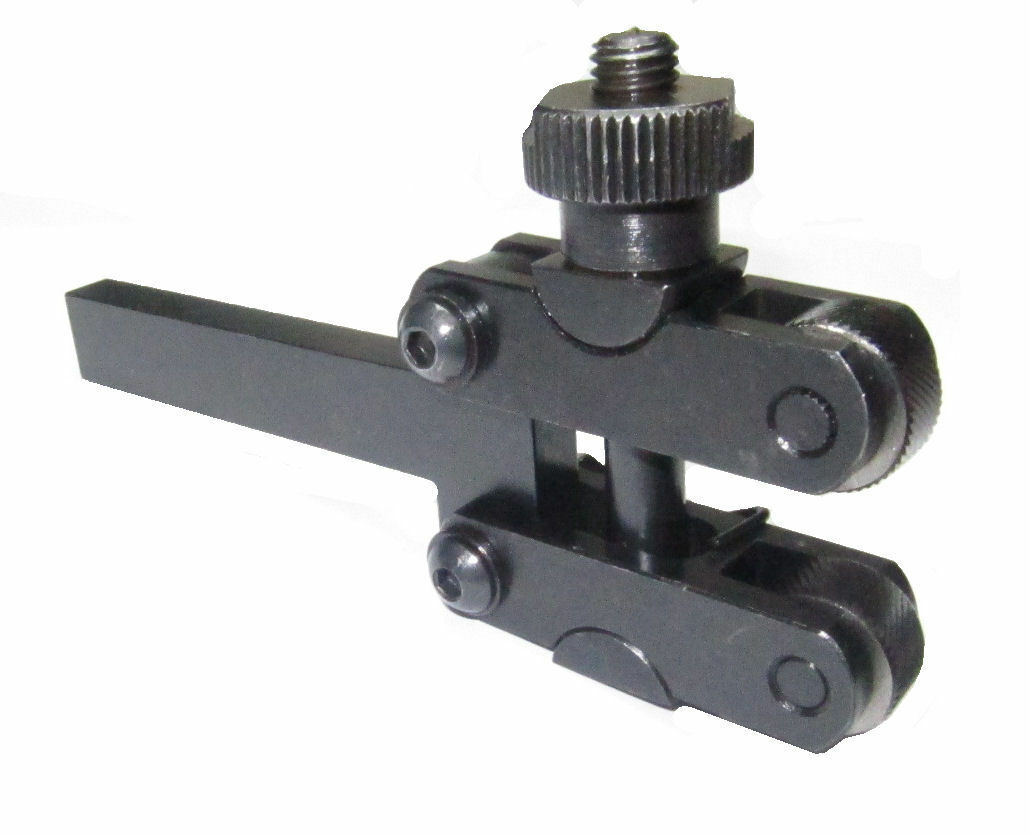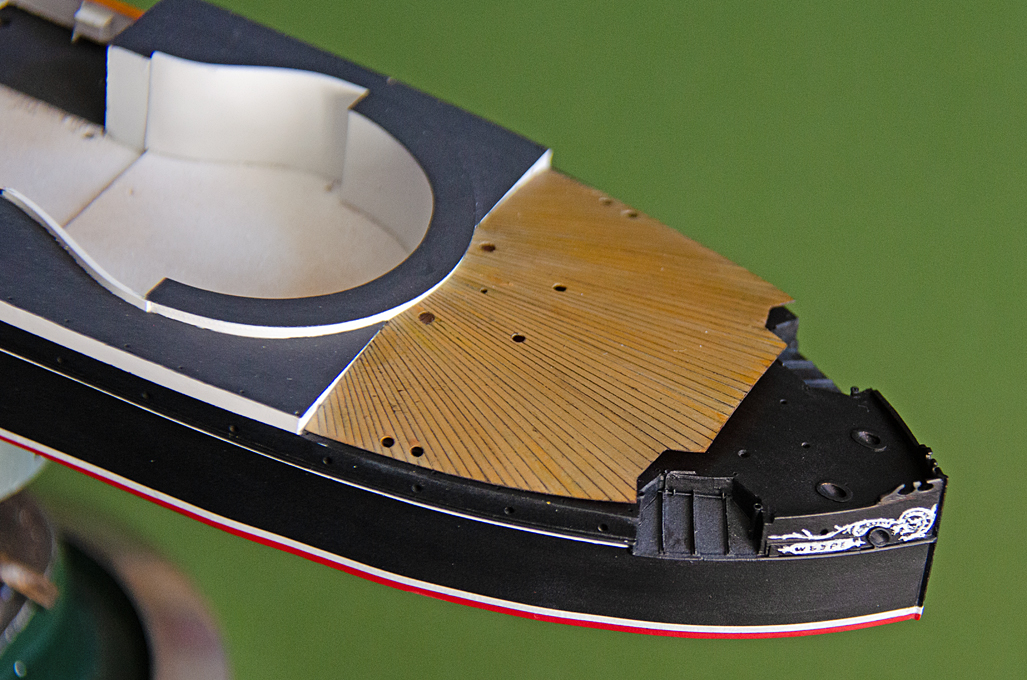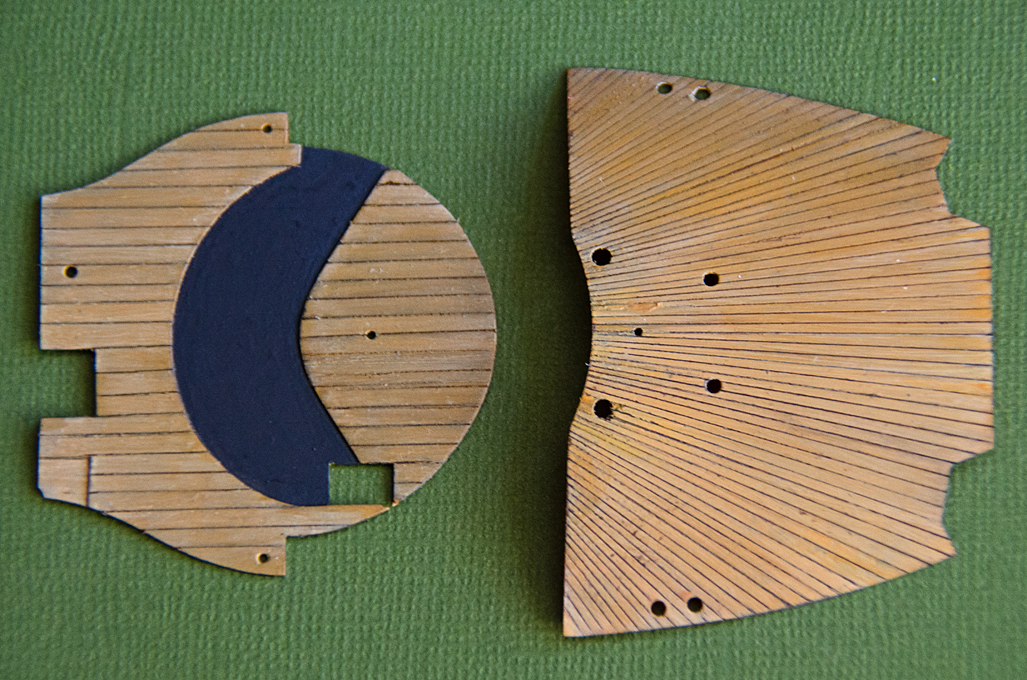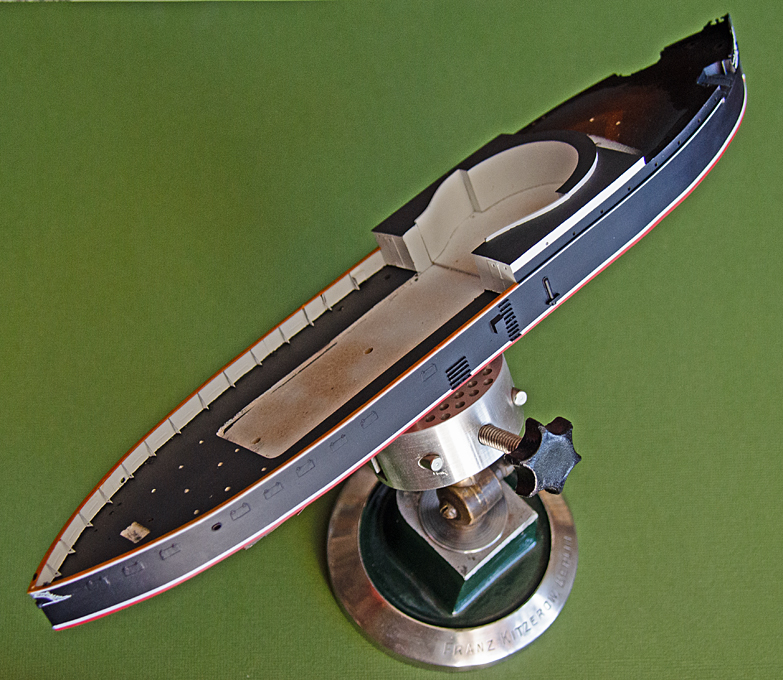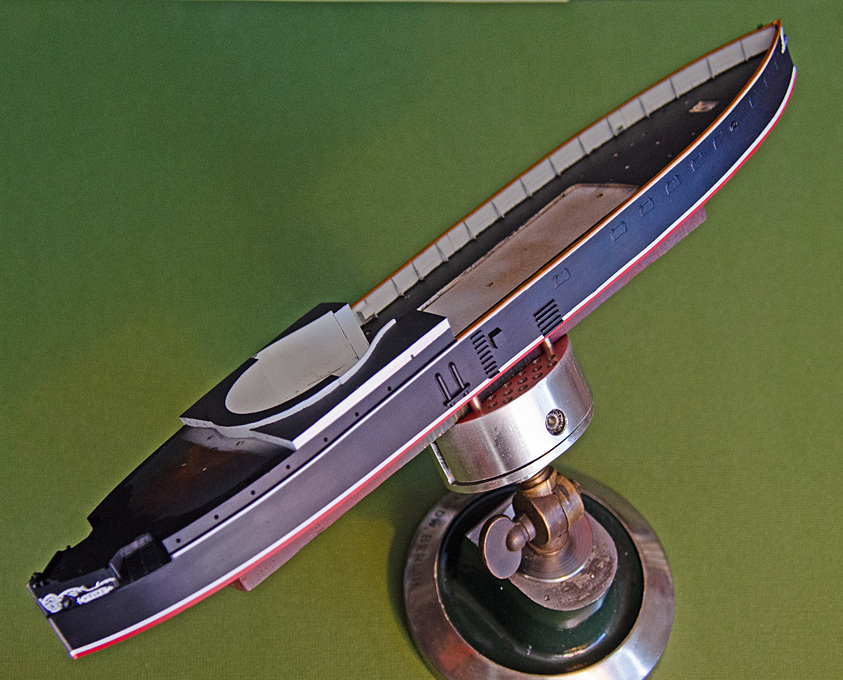-
Posts
5,566 -
Joined
-
Last visited
Content Type
Profiles
Forums
Gallery
Events
Everything posted by wefalck
-
The bolt-rope diameter is proportionate to the size of the sail and the weight of the cloth used to make the sail. Check out the above references and work it out for your model. There is no off-the-shelf recipe.
-
You could check out CONSOLIN, B. (1863): Methode pratique de la coupe des voiles des navires et embarcations. Suivi des tables graphiques facilitant des operations diverses de la coupe avec ou sans calcul, ouvrage offrant aux capitaines des reseignements utiles à la mer.- 194 p., Paris (Mallet-Bachelier). MERLIN, J. (1865): Traité pratique de voilure ou exposé de méthodes simples et faciles pour calculer et couper toutes espèces de voiles.- 226 p., 7 pl., Paris (Arthus Bertrand). They are both available as eBooks and may have information on the proportionate size of bolt-ropes. To my knowledge, jibs would have bolt-ropes on all sides. Most of the sails of ocean-going ships from the 18th century onwards would have bolt-ropes all around, as they help to distribute the strain of the various attachment points.
-
The unused anchor-cable my be just lead underneath the spill and lashed at a convenient point. The diameter of the cable would beed to be calculated from the weight of the anchor. There are contemporary textbook sources for this, but I don't have them at the tip of my fingers. Perhaps someone else can chip in here.
-

Where can I find metal wire?
wefalck replied to flying_dutchman2's topic in Metal Work, Soldering and Metal Fittings
Try molybdenum and you will love piano wire However, the hard temper can be drawn out of piano wire by cautiously heating it up with a torch. The different oxidation colours will give you an indication of the hardness: Try on samples until you get the hardness/springiness you want and then always heat to that temperature. -
Indeed, their naval books I have seen are colourful, but being tertiary references, of rather limited value. Just looked up MAGENTA in 'Conway's All the World's Fighting Ships 1860-1905' (secondary reference) and there MAGENTA is down 16 55 pounder smooth bores, 34 6.4 in (= 162 mm) breech-loaders M. 1860, and 2 8.8 in (= 224 mm) rifled muzzle-loaders. This sounds quite credible and I will have a look, what I can find about these guns in my primary references.
-
nutricious 🤭
-
This kind of holder to fit into the toolpost can be bought at reasonable prices: For light knurling in brass a simple holder to feed straight into the part may be sufficient. Be aware, that knurling forms sort of triangular ridges - gear teeth look somewhat different, with sort of vertical flanges and a space at the bottom between the teeth.
-
I gather the tallow used in tanning is quite nutrious
-
The colour of the sail cloth, of course, depends on the material that was used. In Europe mostly flax and hemp were used, while in the US, I believe, early on cotton was used. Flax and hemp are a very light yellow-grey, if not bleached (which was only done for garmanents etc.), while the cotton fibre is already white. Tp preserve sails on small fishing craft that did have little time to dry their sails properly, the sails were impregnated - tanned. Various procedures and concoctions were used, but in typically contained tallow, lineseed oil and ochre. The ochre gives the distinctive colour that can range from a light yellow to a deep red. While in northern Europe painting sails went out of fashion around the 16th century or so, it persisted in the Mediterranean into the 20th century. Some Adriatic craft have rather colourful sails that serve to distinguish individual boats, but also may have 'protective' or 'votiv' functions (there may saints or their symbols being painted on, for instance).
-

Firing a replica 18th century naval cannon - damage
wefalck replied to Louie da fly's topic in Nautical/Naval History
From the middle of the 19th century on many navies carried out systematic experiments with mock-ups of wooden and iron 'walls' and different types of guns and projectiles. I have an original French naval artillery yearbook that shows images of the effects and discusses them. When in the mid 1850s rifling and ogival projectiles were introduced, this gave greater penetration power, but on the other hand, the projectiles went straight through wooden ships with causing less damage and less desired 'collateral' damage by splinters. Therefore, for a while ships carried both, old-style smoothbore muzzle-loaders and more modern rifled muzzle- and breech-loaders in order to have the right tools for the different jobs. The development of safe and reliable time-fuses in the 1860s for shells that could be fired from rifled guns solved that problem ... -
That's probably true, Bedford, but only that way we improve ****************************************************** More Paintwork According to the 1874 ordinance on paintwork, the ships were to have a white boot-topping stripe and a somewhat narrower white stripe just below the main rail. This scheme is clearly visible on the old photograph shown in the previous post. At that time also all the scroll-work was to be painted in a sober white, rather than the ochre/gold of later paint-schemes. It occurred to me that the easiest way to apply the white stripes on such a small model would be to cut narrow strips of white decal sheet and to place them appropriately. However, the latter part resulted in a lot of stress, fumbling and cursing. These long, narrow strips needed a lot of coercing and touching up with white acrylic in places. As I do not work with decals very often these days, I did not have any decal-softener to hand, which might have made this operation somewhat easier. In the end, the strips had to fixed additionally by infiltrating dilute satin varnish underneath them with a brush. In order to blend everything together, the hull then was given a coat of satin varnish. Perhaps the Prince August Air varnish was too viscous still for the air-brush, but when sprayed on it turned out rather matt and made the hull grey! Brushing on another thin layer got me over the shock moment. Perhaps it would have been easier to air-brush everything in white and then cut a narrow strip of Tamiya masking tape to mask the area of the white stripes and also to mask strategically for painting the hull in red and black … The scroll-work at the bow and stern then was picked out in white acrylics using a spotter brush and a (reasonably) steady hand. Wooden decking for the barbette and the forecastle. I also painted the only two pieces of wood decking on this ship, namely that on the forecastle with the distinct radial plank pattern (to minimise blast damage from the heavy gun) and within the barbette. The planks had been engraved a long time ago already with a hand-graver. The pieces were given a base coat of Prince August 77 (bois-wood) with the air-brush. This was followed by a light wash of 834 (bois transparent), which has a slightly lighter tone, applied with a flat hair-brush. Some planks were given another light wash of Vallejo 71.074 (beige) with a small brush. The planks then were followed with 0.05 mm black pigmented ‘fine-liner’. The excess was immediately wiped off with a clean finger-tip. In this way a narrow to scale seam remains. Forecastle put into place temporarily. To be continued ....
-
Just a few additional thoughts: In principle alcohol (ethanol) is something dead cheap, but in many countries qualities fit for human consumption is heavily taxed. In Germany a litre of 96% was something like 50€, but the actual production costs are in the cent range. I seem to remember that in the US one could get it in a liquor store for a fraction of that price, but is information 30 years old. I am not sure what alcohol is used in them, but ready-made shellac solutions do not have an offensive smell (but I am actually quite tolerant towards the smell of organic solvents). Perhaps they use just plain ethanol, as the shellac solution would be unfit for human consumption, of course. So this could be solution to the problem, rather than mixing it up yourself. Sanding sealers used to be nitrocellulose lacquers in a mixture of organic solvents with pumice powder added. I gather these days they are acrylic emulsions in a mixture of water and alcohol(s). Water however, has less good wetting propoerties with respect to wood than organic solvents. Therefore, the modern sanding sealers do not penetrate wood as well, as did the old ones. The effect of such varnishes or lacquers, with or without pumice fillers, is that they fill the pores in the wood, obviously. Light then is not reflected from the surface of the wood, but sort of channelled into the pores from which it is not reflected anymore (or less). This makes the wood appear darker with 'depth' in the sheen. Beech-wood is very common over here in Europe and used for all sorts of purposes, where you need a harder wood than e.g. pine, but do not want (or cannot afford) to use tropical hardwood. However, as all woods growing in temperate climates, it has growth rings with different properties. When cut tangentially (which it normally is) the growth rings will take on dyes quite differently, so it may look patchy after dying. A tinted varnish (stain) over a clear sealer is probably a better option.
-
I gather it depends also on the direction with which the plank was cut from the tree, i.e. radial or tangential. I don't remember, whether I ever tried to stain beech, but for furniture-type applications I regularly apply solvent-based(!) sanding sealer, rub it down with 320 or 400 grit, apply another thin coat and then rub it down with steel-wool (or scrape it for flat surfaces), which results in a smooth satin finish with a light honey colour. Methylated spirit is only toxic, when you drink it !
-
Painting on the sprue may sound attractive, but based on my plastic-kit experience from some 30 years ago, I would not do it, because it is difficult to remove flash satisfactorily, while the parts are still on the sprue. This applies particularly to round objects, such as cannon. The risk is that you flatten them. However, I appreciate that it may be difficult to hold 1/150 scale cannon for painting. Are the cannon attached at the muzzle ? Then I would perhaps cut off a small piece of sprue with the cannon still attached. This give you good access to the cannon for flash removal and a handle for painting. After painting you can slice the cannon off with a scalpel, clean up the fron of the muzzle, drill it open (if not representing tampions), and touch up the muzzle, if needed.
-
I think it is coming on nicely ! It enhances the 3D-impression and enlivens the surface.
-
Most probably you will not find something ready off the shelf. You will have to be looking for some 1:48 military or railroad figurines and do some plastic surgery and re-dressing on them. There are various cheap styrene ones for which conversion techniques are simple. It more difficult with white-metal ones. Looking around ebay for used ones could also be a good and cheap source. There are various books and guides on the Internet on how to work with such figurines and how to paint them. It is actually a whole hobby area. We already had a thread on the subject here with in the same topical area. You may want to look for prints by Garneray, who, being a mariner himself, drew various seamen in the mast, I believe.
-
Too bad ... over here in Europe they have started opening up again - in western Europe at least the majority of people have been vaccinated (which doesn't prevent the UK apparently from having 40k new cases every day ...).
-
For the rigging, there are various contemporary French and British textbooks on the subject, some of them also available as ebooks. They might be better then Underhill, who mainly deals with late 19th century merchant ships. Somwhere in another post here on the forum I listed most of the late 18th to early 20th century rigging books I am aware of.
-
Well, as we observed earlier, such ship were steered using the helm, rather than a steering wheel ... The gun would have been a 2-pounder or something like that and intended for signalling, rather firing in earnest at something/someone. The Baltic has been comparatively safe in the early 19th century, no pirates and such. With the barrel horizontal, it would fire under the rail. In order to effectively work the pump, the fulcrum should be about waist-high. You can work it out by making yourself a scale dummy, say cutting out a figure from thin cardboard. Such a dummy is always useful to get feeling for scale and proportions. Not absolute sure that the pump would be correct for this period. The black anchor, indeed, seems to be way too big. Anchor sizes are determined by weight, but it is not so easy to work out to what size this converts. The actual size would also depend on how the individual anchor is made. Perhaps someone else can help with table of anchor sizes per weight, I don't have one at my finger-tips. In any case, it would have a wooden stock. Just a modelling tip: you should probably sand your parts more thoroughly. They will look more delicate when painted and fit better together.
-
The 'depth' is exactly what you normally want avoid here ... the impression of depth is brought about by filling surface roughness that reflects more light, while using pastels just uses the surface roughness of the 'chalk' ... However, as noted above, you can also use the pigment of the pastels and their ease of application and then turn this into a sort of in situ paints. BTW, water colours or guaches can also be used for weathering, say for water streaks and the likes. The same effect can be achived with dilute acrylics, but you can wash it off, if you are not happy with it. Water colours would also need some 'fixatif' to prevent them from being rubbed off, when handling parts.
About us
Modelshipworld - Advancing Ship Modeling through Research
SSL Secured
Your security is important for us so this Website is SSL-Secured
NRG Mailing Address
Nautical Research Guild
237 South Lincoln Street
Westmont IL, 60559-1917
Model Ship World ® and the MSW logo are Registered Trademarks, and belong to the Nautical Research Guild (United States Patent and Trademark Office: No. 6,929,264 & No. 6,929,274, registered Dec. 20, 2022)
Helpful Links
About the NRG
If you enjoy building ship models that are historically accurate as well as beautiful, then The Nautical Research Guild (NRG) is just right for you.
The Guild is a non-profit educational organization whose mission is to “Advance Ship Modeling Through Research”. We provide support to our members in their efforts to raise the quality of their model ships.
The Nautical Research Guild has published our world-renowned quarterly magazine, The Nautical Research Journal, since 1955. The pages of the Journal are full of articles by accomplished ship modelers who show you how they create those exquisite details on their models, and by maritime historians who show you the correct details to build. The Journal is available in both print and digital editions. Go to the NRG web site (www.thenrg.org) to download a complimentary digital copy of the Journal. The NRG also publishes plan sets, books and compilations of back issues of the Journal and the former Ships in Scale and Model Ship Builder magazines.



